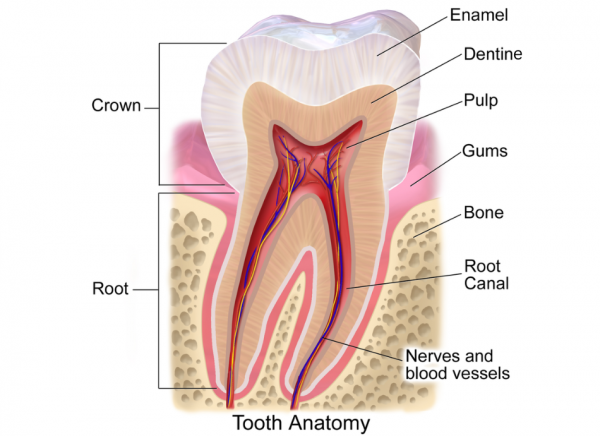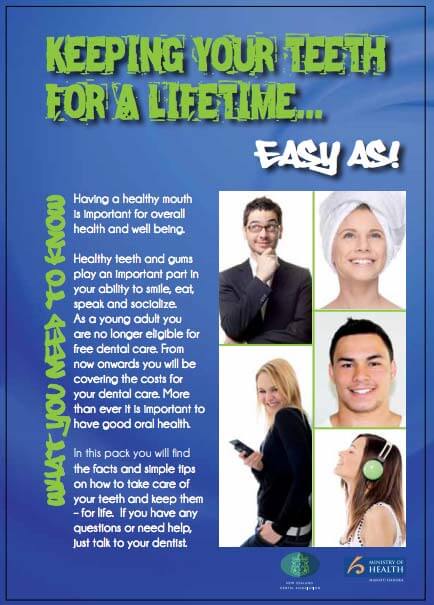Your teeth have 3 parts, the crown sits above your gumline, the neck is at the gumline and the root is under the gum and surrounded by the bone of your jaw. Teeth consist of different layers, the hard external layer is called the enamel and underneath that layer is the dentine (or dentin) and then the pulp. Tooth wear is when the enamel which has no feeling is worn away, uncovering the dentine which has feeling and can lead to pain and sensitivity.

Image credit: Wikimedia Commons(external link)









